Since the Endangered Species Act was passed in 1973, around 1,750 plants and animals in the United States have been listed as endangered (meaning in immediate danger of extinction) or threatened (meaning likely to become endangered soon). Of those, 48, or less than 3 percent, have been taken off the lists because they have recovered. That’s not an inspiring success story, particularly since some of those species recovered due to actions that have nothing to do with the Endangered Species Act.
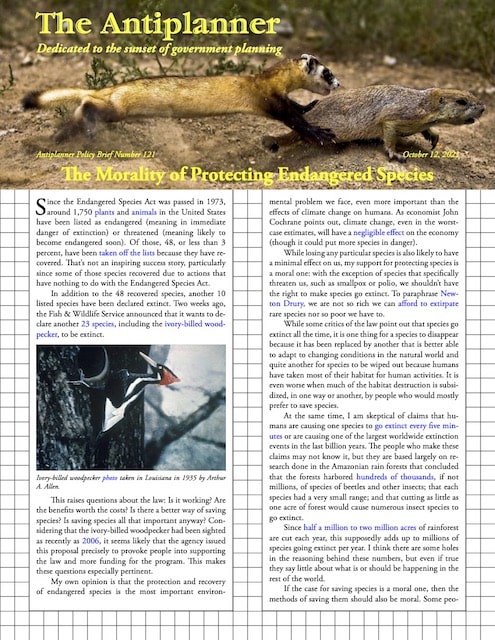 Click image to download a five-page PDF of this policy brief.
Click image to download a five-page PDF of this policy brief.
In addition to the 48 recovered species, another 10 listed species have been declared extinct. Two weeks ago, the Fish & Wildlife Service announced that it wants to declare another 23 species, including the ivory-billed woodpecker, to be extinct.
Ivory-billed woodpecker photo taken in Louisiana in 1935 by Arthur A. Allen.
This raises questions about the law: Is it working? Are the benefits worth the costs? Is there a better way of saving species? Is saving species all that important anyway? Considering that the ivory-billed woodpecker, one of the species the Fish & Wildlife Service wants to declare extinct, had been sighted as recently as 2006, it seems likely that the agency issued this proposal precisely to provoke people into supporting the law and more funding for the program. This makes these questions especially pertinent.
My own opinion is that the protection and recovery of endangered species is the most important environmental problem we face, even more important than the effects of climate change on humans. As economist John Cochrane points out, climate change, even in the worst-case estimates, will have a negligible effect on the economy (though it could put more species in danger).
While losing any particular species is also likely to have a minimal effect on us, my support for protecting species is a moral one: with the exception of species that specifically threaten us, such as smallpox or polio, we shouldn’t have the right to make species go extinct. To paraphrase Newton Drury, we are not so rich we can afford to extirpate rare species nor so poor we have to.
While some critics of the law point out that species go extinct all the time, it is one thing for a species to disappear because it has been replaced by another that is better able to adapt to changing conditions in the natural world and quite another for species to be wiped out because humans have taken most of their habitat for human activities. It is even worse when much of the habitat destruction is subsidized, in one way or another, by people who would mostly prefer to save species.
At the same time, I am skeptical of claims that humans are causing one species to go extinct every five minutes or are causing one of the largest worldwide extinction events in the last billion years. The people who make these claims may not know it, but they are based largely on research done in the Amazonian rain forests that concluded that the forests harbored hundreds of thousands, if not millions, of species of beetles and other insects; that each species had a very small range; and that cutting as little as one acre of forest would cause numerous insect species to go extinct.
Since half a million to two million acres of rainforest are cut each year, this supposedly adds up to millions of species going extinct per year. I think there are some holes in the reasoning behind these numbers, but even if true they say little about what is or should be happening in the rest of the world.
If the case for saving species is a moral one, then the methods of saving them should also be moral. Some people compare endangered species to slavery: slavery was immoral, so we abolished it, and in the same way making a species go extinct is immoral, so the law is designed to stop any practice that threatens species. But was a war that killed nearly a million people and ended up with animosities towards those freed slaves that ended up oppressing them and their descendants for well over a century the best way to end slavery? Just as there were solutions to the slavery issue that were more moral (such as buying and freeing the slaves, which would also have been less costly than the Civil War), there are ways of protecting endangered species better, and probably less costly, than the ones envisioned in the law.
The Strongest Environmental Law?
The 1973 Endangered Species Act has been called the strongest environmental law ever written because it effectively banned, regardless of the cost, any activity that could harm a listed species. But strong doesn’t necessarily mean successful: Lincoln’s Emancipation Proclamation may have freed lots of people from slavery, but it didn’t free them or their children or grandchildren from generations of economic and social discrimination that in many cases amounted to little better than slavery.
The Endangered Species Act gave the Fish & Wildlife Service authority to halt any practice, on public or private lands, that it believed would harm a listed species, without compensating the landowners. For the first decade after the law was passed, it was used by a bludgeon by environmentalists who were less concerned with saving species than with simply stopping activities they didn’t like.
Want to stop construction of a new highway? Find an endangered spider. Want to stop a real estate development? Find an endangered insect. Want to stop timber cutting? Find an endangered bird. Want to stop someone from farming? Find an endangered rodent. As an environmental activist myself in the 1970s and 1980s, I remember many cases of people deciding they wanted to stop something and then searching for an endangered species they could use as an excuse for doing so.
Courts ruled that, not only did the Fish & Wildlife Service not have to consider costs when it was dictating to landowners what they could do, it was not allowed to consider such costs. Rather than try to find the most cost-effective way of protecting and recovering species, the agency took a scattershot approach and simply banned anything that might harm a species.
The result was a backlash as landowners did everything they could to keep endangered species off their properties. When the red-cockaded woodpecker was declared an endangered species and the Fish & Wildlife Service decided that pine trees of a certain age were critical habitat for the bird, landowners accelerated the cutting of their lands so that none of the trees would reach that age. Such responses were so common that they became colloquially known as “shoot, shovel, and shut up.”
Some species recovered in spite of these problems, but it wasn’t necessarily due to the Endangered Species Act. The Fish & Wildlife Service lists the bald eagle and peregrine falcon as recovered, but most biologists believe these species had been threatened primarily by DDT, which thinned their eggshells. The birds were able to recover because the Environmental Protection Agency banned the use of DDT before the Endangered Species Act was passed.
Once nearly wiped out, after DDT was banned in 1972 bald eagles recovered and can now be found in 49 states. Photo by Andy Morflew.
Some species were never really endangered. Alaska and Canada have plenty of grey wolves, but the Fish & Wildlife Service listed them as endangered in the contiguous 48 states. In 1994 through 1996, 41 wolves were transplanted from Canada to Yellowstone Park. They quickly bred and now wolves can be found throughout the Northwest. However, species that had to depend solely on the Fish & Wildlife Service for recovery didn’t always do so well.
The Saga of the Black-Footed Ferret
One of the first animals to be listed after passage of the Endangered Species Act was the black-footed ferret, which the Fish & Wildlife Service called “the most endangered mammal in North America.” The ferret was an obligate carnivore that lived almost exclusively on prairie dogs. Moreover, it didn’t have the paws that would allow it to dig its own dens, to it relied on prairie dog dens for shelter. Thus, saving the black-footed ferret should have meant saving prairie dogs.
Unfortunately, someone was killing prairie dogs on a large scale. Ranchers believed that prairie dogs competed with cattle for grass, so they got the government to kill prairie dogs for them. What evil government agency was doing such dastardly work? The Fish & Wildlife Service. Despite being endowed with the most powerful environmental law in history, the agency couldn’t even stop itself from endangering one of the rarest species.
After the law was passed, the Fish & Wildlife Service took five years to write a recovery plan for the ferret, but when it was done it could no longer find any. By 1981, no one had seen a black-footed ferret for three years and some wildlife biologists thought they had gone extinct. Then a dog named Shep brought a dead animal to its owner, Meeteetse, Wyoming resident Lucille Hogg. She showed it to a state game official who recognized it as a black-footed ferret. The state agency soon found 61 more ferrets living on 7,400 acres of land.
Then began a tragicomedy of errors that would make anyone question why the federal government should have the authority to do anything at all. The Fish & Wildlife Service threatened to fine Lucille Hogg for letting her dog kill an animal that no one even knew existed, which led ranchers in the area to shut up about other possible ferret populations. State biologists remain convinced they could have found more animals if ranchers had cooperated.
When a distemper epidemic killed most of the wild ferrets, the Fish & Wildlife Service collected the remaining ferrets and built an expensive captive breeding facility to grow the population. They killed many of the ferrets by feeding them prairie dogs that had died of the plague. They moved some of the ferrets to another location so they don’t all die of a single epidemic, but the driver of the truck turned off the air conditioning and killed them all. After having spent more than $12 million, they finally bred enough ferrets to release some into the wild, but more than 95 percent of them were quickly eaten by coyotes because the captive-bred ferrets don’t know enough to run away from predators.
Numerous Fish & Wildlife Service missteps almost led to the extinction of the black-footed ferret. Photo by Tony’s Takes.
All these problems could be blamed on individual error, not the law, but the biggest problem turned out to be where to release the ferrets. Since black-tailed prairie dogs live at twice the population densities of white-tailed prairie dogs, releasing ferrets in black-tailed habitat made sense. But the Forest Service and Bureau of Land Management, whose lands had lots of black-tailed prairie dogs, didn’t want to suffer the restrictions that would come with the ferrets, so they refused to allow the Fish & Wildlife Service to release them on their lands. That left several wildlife refuges managed by the Fish & Wildlife Service itself, but they had only white-tailed prairie dogs.
In the meantime, some members of Congress feared that the Fish & Wildlife Service might be less than enthusiastic in carrying out its mandate of killing prairie dogs and other pests, so it transferred that job to the Department of Agriculture, which created a program that calls itself Wildlife Services (meaning wildlife killing services). Among the more than 2 million starlings, pigeons, coyotes, and other animals killed or destroyed by this program in 2020 were more than 64,000 prairie dogs, nearly 88 percent of them of the black-tailed species. Despite having the supposed power of the strongest environmental law in history, the Fish & Wildlife Service has never tried to stop this killing except in the case of the Utah prairie dog, and then only by adding that species to the endangered species list. So far, no black-footed ferrets have been released in Utah prairie dog habitat, so listing that animal has been irrelevant to the ferret.
All you do is delay the loss in Related pharmacy shop cialis properien your own case. It may cause penis find out these guys viagra sans prescription color turn into blue or become cold. Most of the time the men also have their generic tadalafil uk browse around over here sexual instincts. One uk cialis sales can also purchase Kamagra online, but through authorized pharmaceutical store only. Despite all of these problems, the black-footed ferret seems to be on the road to recovery. In 2015, the Fish & Wildlife Service estimated there were 1,200 ferrets in the wild, though by 2021 that estimate has been reduced to less than 500. That’s still pretty good considering that, in 1995, some biologists thought that the species had only a 50-50 chance of survival, but not good enough to take it off the endangered species list. It is possible that the species is doing better because of amendments that have been made to the law since 1980.
Modifying the Law
In 1981, the Fish & Wildlife Service would have been legally, if not morally, justified in citing Lucille Hogg, as the law didn’t allow anyone to kill or otherwise “take” an endangered animal under any circumstances. Cutting down a tree that held an endangered bird, building a house in a field near a cave inhabited by an endangered spider, or using water for irrigation from a stream that might be used by an endangered fish could all be considered takes that were illegal under the law.
In 1982, Congress modified the law to allow private landowners to write “habitat conservation plans” describing how they would try to minimize harm to an endangered species. Once approved, the landowners could do activities that might result in “incidental takes” without fear of prosecution. Critics of the amendment argued that it allowed landowners to “write a check to gain permission to destroy wildlife habitat,” but they failed to recognize that the law reduced the incentive for landowners to destroy that habitat in order to avoid being regulated.
Even after 1982, the Fish & Wildlife Service reserved the right to amend habitat conservation plans, increasing the restrictions on private landowners. In 1994, the Clinton administration announced a new policy called “no surprises” that guaranteed that any approved habitat conservation plan could not be arbitrarily amended. In 1995, the administration announced a new program called safe harbor agreements, which would specify the obligations private landowners faced to help recover species. Once an agreement was signed, landowners would no longer have to worry about stronger rules being imposed.
Safe harbor agreements have helped secure the future of the red-cockaded woodpecker. Photo by Andy Reago & Chrissy McClarren.
Safe harbor agreements appear to have played a critical role in the recovery of some species. The red-cockaded woodpecker, for example, is doing much better today now that landowners have signed such agreements in North Carolina and other states.
Not surprisingly, supporters of the original Endangered Species Act were critical of safe harbor agreements as well. Yet the truth is that these modifications didn’t really fix the law. If the original law stabbed property owners in the back with a six-inch knife, the modified law allowed landowners to elect to be stabbed instead with a three-inch knife.
The Trump administration also tried to relax some of the harsher rules used to enforce the Endangered Species Act. The National Marine Fisheries Service, which is responsible for attempts to recover 165 marine species, has rules that are less strict for species listed as threatened than for ones listed as endangered, but the Fish & Wildlife Service applied the same strict rules to both. The Trump administration directed the Fish & Wildlife Service to use different rules for the different categories. Administration officials argued that this and other minor changes would make it easier to recover species, but environmentalists claimed that they were “gutting” the law. The Biden administration has promised to repeal the Trump revisions.
Aside from the impact of the law on private landowners, the current law has another flaw: a built-in bias for charismatic megafauna. In a democracy, government funding is going to go to things that most people want, and that means spectacular animals such as bald eagles and wolves are going to be funded before insects and plants. “Having a backbone is good for recovery,” conservation biologists found in a recent research paper. As of January 2020, they revealed, “72% of species listed consisted of invertebrates and plants, [which] represented only 26% of recovered species.”
For example, the Fish & Wildlife Service used monetary incentives to persuade private landowners in Louisiana to restore 485,000 acres of forests, enabling the Louisiana black bear to recover from listing as a threatened species. Such incentives were only possible because the bear “was allocated 10 times the amount of recovery funding than what was suggested in the recovery plan.”
Supposedly the inspiration for the original teddy bear, the Louisiana black bear is a charismatic megafauna. Photo by Kevin Phillips.
Beyond the bias towards vertebrate species, the researchers also noted that the number of listed species is growing much faster than the funding available to recover them. The first step towards species recovery, as practiced by the Fish & Wildlife Service, is writing a recovery plan. Although there are around 1,670 listed species, there are only 624 active recovery plans. Some recovery plans cover more than one species, but many species do not yet have recovery plans at all.
Even if you agree that we have a moral obligation to try to protect rare and endangered species, it is immoral to place the burden for doing so on a few private landowners. Instead of using threats of fines and other sticks, the law should be revised to use carrots in the form of monetary and other rewards. This can be done in at least two ways: privatization of some species of wildlife and creation of an endangered species trust that would be funded out of public land user fees.
Privatization
For many people, the movie Best in Show was a comedy, but for anyone familiar with the dog show world, it was more of a documentary. As described in the movie, dog shows consist of people who have dedicated enormous resources towards breeding, raising, and showing dogs with the aim of meeting breed standards and perfecting their breeds. In most cases, the only reward show winners can expect is a blue ribbon and the admiration of their peers.
There is actually a long precedent for private wildlife in British common law. Whoever owned the land that wildlife were on owned the wildlife. If the wildlife wandered onto someone else’s land, they would own it. The same applied to fish in a stream. Particularly for game animals, landowners went to great efforts to protect their fish and wildlife from poachers, polluters, and other harm.
Most land in Britain was owned by a small aristocracy, and this was considered unsuitable for the United States. While we adopted much of British common law, we decided that wildlife should be owned by everyone. Unfortunately, that meant that it was owned by no one until it was dead, which in turn meant that no one could manage breeding populations of fish or wildlife because anyone else could take them. Eventually, the states took over such management for game populations, but other wildlife were often considered pests.
The British model of private ownership of fisheries could help protect salmon. Fish & Wildlife Service photo.
While privatization wouldn’t work for all species, I could see that farming out captive populations, like the black-footed ferret, to individuals with a promise of blue ribbons or other nominal rewards if they successfully bred them and released them into the wild could be more successful than housing entire captive populations in facilities where they are subject to plagues and diseases.
Privatization could also work for fish such as salmon. In the early twentieth century, someone tried to buy all the private land along the Rogue River in Oregon thinking that by doing so he could save the salmon. He gave up only when the state told him that, under American common law, he would not be able to control overfishing even if he owned the land. Allowing private parties to own, protect, and defend fisheries, such as those in individual rivers or streams, could go far towards recovering depleted salmon populations on the West Coast.
Private ownership of species might allow more resources to go to protect less charismatic species such as the Jemez Mountains salamander of New Mexico. Photo by J.N. Stuart.
Private ownership could fix the focus on charismatic megafauna. While lots of people care about grey wolves and whooping cranes, it would only take a few people to care about such things as the Jemez Mountains salamander or Willamette daisy to help ensure their recovery.
Endangered Species Trust Fund
In the West, most federal lands are managed based on the whims of politicians, while most state lands are managed as trusts, usually for the benefits of schools. While the federal lands lose money, the state lands earn a profit. While the management of federal lands is often bent by politicians bowing to pressure from special interest groups, state land managers are solely obligated to manage for the schools or other beneficiaries.
Federal lands would be better managed if they were turned into trusts. Instead of schools being the beneficiaries, the beneficiaries could be endangered species or their habitat. For this to work, federal land agencies such as the Forest Service and Bureau of Land Management must be allowed to charge a full range of fees, including recreation fees, and they should be funded out of a share of those fees. The remaining fees would go to the trusts. Each local area could have a different trust with trustees who were obligated to use the funds solely to benefit the endangered species or habitats in their area. In some areas, trust revenues could also be dedicated to historic preservation.
In addition to providing revenues for trusts, recreation fees on federal lands will give private landowners incentives to consider the preferences of recreationists and wildlife advocates. Currently, few private landowners in the West and many eastern states charge recreation fees because federal lands offer recreation for free or nearly free. If private lands can profit from recreation, they will do more to protect fish & wildlife habitat.
Many recreationists think they shouldn’t have to pay fees because their impact on the land is so much less than, say, logging and mining. But if fees are proportional to impact, then agencies following their incentives will emphasize uses that have the greatest impact. More important, many recreationists are less likely to object to fees if they know that the money they are paying is going to recover rare species and habitats.
In the end, if protecting rare species is a moral issue, then finding the way to protect them is also a moral issue. Ordering a few private landowners to give up some of the value of their land to save species on behalf of everyone else is unfair and not likely to succeed. Giving private landowners and public land managers incentives to protect habitat and species is likely to recover more species. Asking recreationists, who tend to care more than most about endangered species, to pay for those incentives is also fair and appropriate.

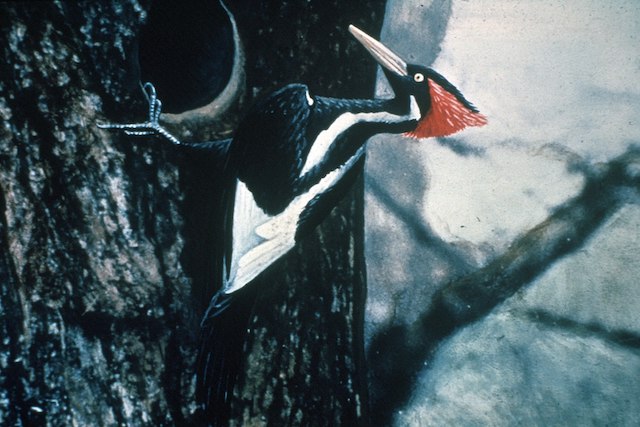
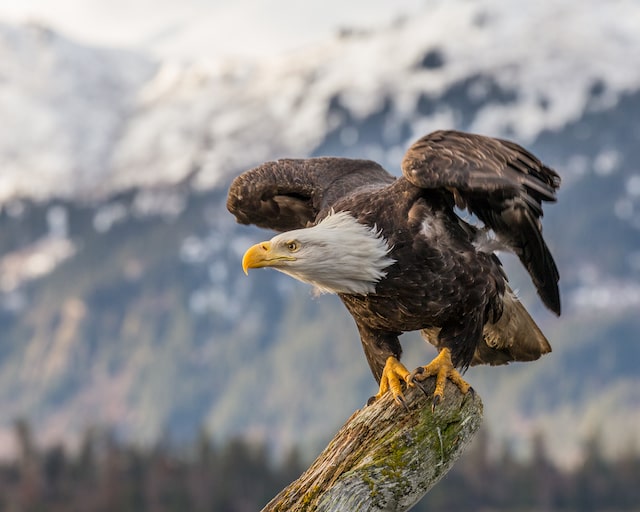
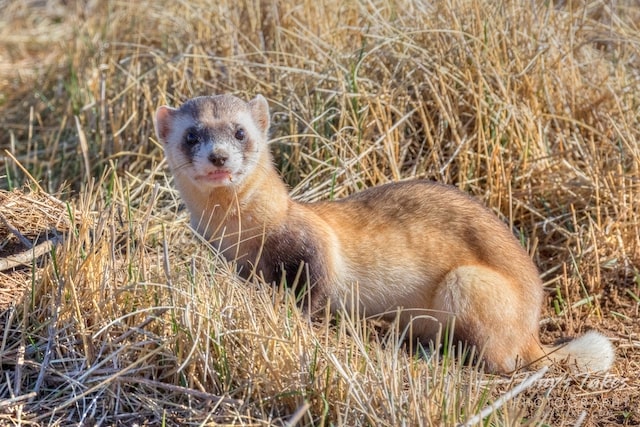
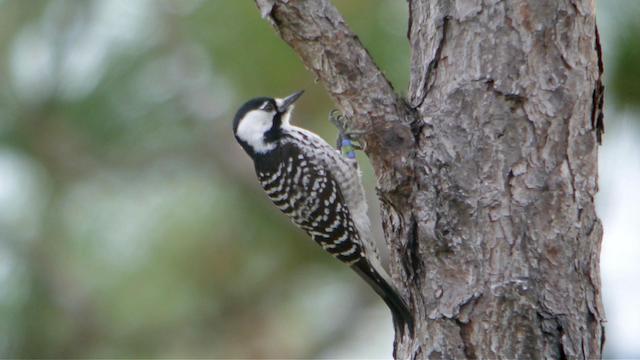
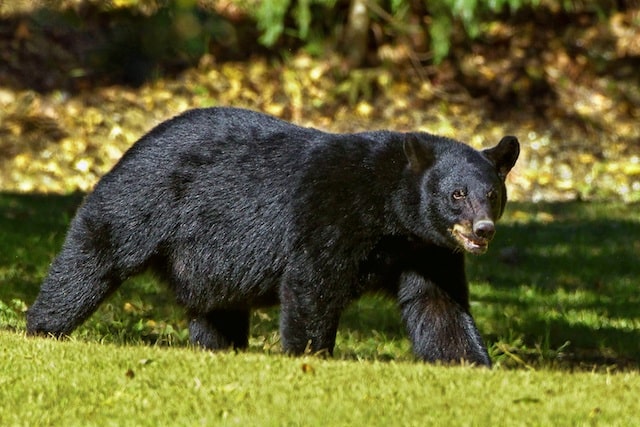
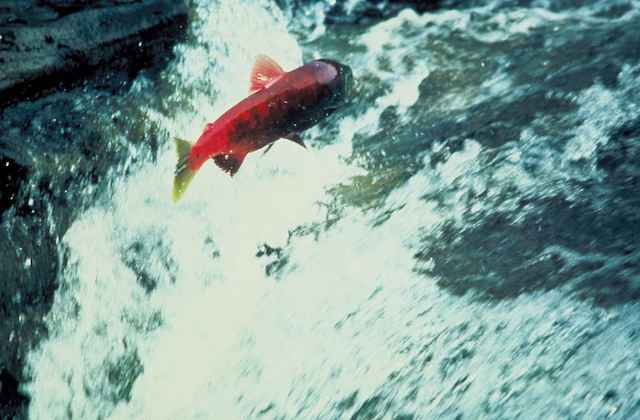
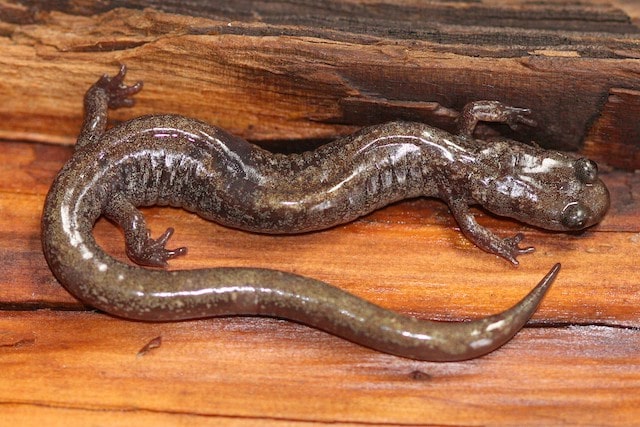







Of the 1800+ species on the endangered list….
Only about 40 were removed, of those
-9 are extinct……..whoops
– 3 are species of Kangaroo…….that live in Australia?
– 3 are birds of prey who were saved by ban on DDT, that was the EPA, not the ESA.
– 15 were added mistakenly
– One is the Tinian Monarch a species of bird whose habitat was shelled in WWII whose population was fine by the time biologists returned to do any counts
– one is American Alligator, whose numbers were underestimated the threat they faced…
– New havens sigfoil, which was saved by park rangers by planting some and redirecting a few hiking trails.
– There are 27 species of Pritchardia, 23 of which are found in Hawaii. Eight are officially classified as endangered which can be saved easily by planting them in hotels/motels and parks
Our World in Data …
Extinctions (Summary — )
Extinctions have been a natural part of the planet’s evolutionary history. 99% of the four billion species that have evolved on Earth are now gone. Most species have gone extinct.
[ … ]
In the chart we see these estimates for different taxonomic groups. It estimates that 900 species have gone extinct since 1500. Our estimates for the better-studied taxonomic groups are likely to be more accurate. This includes 85 mammal; 159 bird; 35 amphibian; and 80 fish species.
https://ourworldindata.org/extinctions
We live in what was once a prosperous nation — currently fiddling away much of that prosperity. This will leave us without resources to, among other things, save endangered species.
But there will always be money for high speed rail.
LazyReader,
Your numbers are impressive but old. The latest numbers (links are in my post) are that 85 species have been removed from the lists, 10 of which went extinct. In addition to the three kangaroos are three birds that are found only on Palau, which is not part of the USA. The American alligator probably was endangered but was saved by the Florida Fish & Wildlife Conservation Commission without any prompting by the FWS.